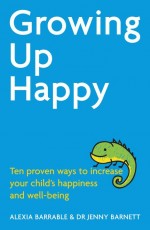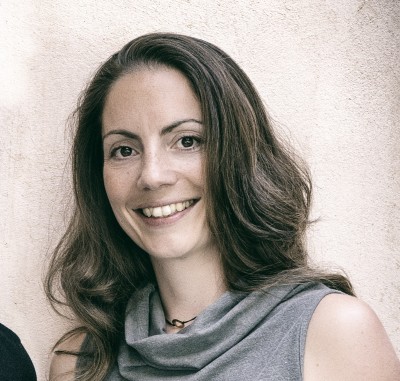The Foundations Of Positive Wellbeing Can Be Laid In The Early Years – Here’s How

Simple ways to get children into happy habits early, all backed up by research

After 10 years of working with young kids, and while waiting to become a mum, I asked myself the million dollar question: what is it that we really want for our children? I chatted to parents of new babies and school-age kids, and those with teenagers; I even spoke to the parents of my adult friends. Their answers were overwhelmingly similar: what all parents seem to want is for their children to be happy!
And yet, we don’t all know how to go about making that happen. Moreover, most schools and other educational settings are not geared to teach us wellbeing skills. But early years settings, in particular, are perfectly placed to lay the foundations for happiness and fulfilment in adulthood.
It matters because the science shows us that the happier we are, the more we succeed in what we do. Happier people are also kinder towards others and even have better health! In my mind, happiness is as worthy a teaching goal as reading and writing.
Here are some simple ways, backed by research, that we can use to teach our children happiness skills from an early age. You probably use some of them already, while others can be added to your normal routines.
Emotional literacy
Emotional literacy, our ability to read, understand and respond appropriately to our own emotions, as well as those of others, is at the heart of wellbeing. There are many ways to help preschoolers develop their own emotional literacy. Here are a few.
Talk about your own emotions When you feel frustrated, sad, excited or disappointed, share that with the children and explain how you deal with it. I remember telling my class of four-year-olds that I often took a deep breath and counted to 10 when I got cross, before responding. After a particularly tough day, and some challenging behaviours, one child asked me to what number I was counting! I couldn’t help but smile at his acute perception of my emotional landscape.
Acknowledge children’s emotions Help children label their emotions, and be open to corrections from them. See if they can identify the source of the emotion: “What do you think is making you upset?” The point of the exercise is not to get rid of negative emotions, but rather to be able to label them and accept them as they are. Changing our attitude and responses, on the other hand, can be useful. For example, appropriate ways of managing anger can be practised in class.
Read stories There is tremendous potential to teach emotional literacy through stories. Most good tales will have characters experience several ups and downs. Talking about the reasons why emotions surface can be eye-opening for children and a fun way to discuss appropriate responses to challenging situations that might not arise in everyday life.
Mindfulness
Mindfulness, non-judgemental attention to the moment, has many and varied benefits. Here are some suggestions to add mindfulness practice to your setting: Breathing buddies Ask children to bring in a teddy from home who can become their ‘breathing buddy’. Once a day, at an appropriate time, teddy can come out and accompany a simple breathing exercise. Lying down, the children place their buddy on their bellies and simply watch them go up and down with each in- and out-breath. Anchoring ourselves to the breath can be an easy way to bring ourselves back to the moment.
One sense at a time There’s no better way to practise being present than focusing on our senses. Senses happen in the here and now, so can be a great way to bring us ‘back into ourselves’. Use just one minute to be still and simply listen to all the things that are going on, take the first minute of snack-time to really taste your fruit, or simply feel your body on the floor as you sit for circle time.
Read a book A Handful of Quiet: Happiness in Four Pebbles, by Zen master Thich Nhat Hanh, is a wonderful book to introduce young children to mindfulness, meditation and breathing techniques. Pebble meditation can be practised in any setting, giving children an opportunity to quieten and reflect in a fun way!
Gratitude
Being thankful for what we have can give our wellbeing a powerful boost. Here are three ways to encourage it.
Model gratitude – our children learn as much, if not more, from what and how we are, as what we tell them. Therefore, encouraging an atmosphere of giving thanks starts with proper modelling: moving on from the automatic ‘thank you’, try to find genuine reasons for giving gratitude and share them with your class.
Change your language – the language we use makes a difference. I found that with preschoolers, using the phrases “Aren’t we lucky to…” and “Today we get to…” goes a long way to cultivating an atmosphere of gratitude for the simple things we often take for granted.
The gratitude tree – on top of that, set aside a few minutes at the end of the week to look back at a few things you might be grateful for. Making a ‘gratitude tree’, as described in my book, Growing Up Happy, is a great way of making a habit of gratitude, and having a visual reminder of all the things we’re grateful for.
Giving
In an academic paper titled ‘Giving Leads to Happiness in Young Children’, researchers from the University of British Columbia describe how toddlers are happier when engaging in the act of giving. The publication follows several pieces of research that suggest that acts of kindness in other age groups promote happiness and wellbeing.
Set up giving routines Setting up preschoolers for success in pro-social tasks can be done easily, by building them into your group’s routine. Handing out placemats, for example, or sharing out the morning fruit can give children a boost in wellbeing, as well as increase their sense of independence and validate them as a valuable members of the group.
Random acts of kindness Have a day of the week when children can perform acts of kindness… just because. Bringing in a piece of fruit for a friend, lending someone a cherished toy, or helping them with something can all help build connections within the group and increase both individual and group happiness. Talk about good deeds Studies show that reflecting on our acts of kindness can give us a further happiness boosts. Ask children to share the ways they have been kind to others, and celebrate the different ways there are to be kind.
KEEP THEM SMILING
Five ways to improve kids’ wellbeing 1. Work on cultivating emotional literacy by sharing your emotions and your responses to them.
2. Read books mindfully and critically, looking at the emotions of characters and how they arise.
3. Nurture the spirit of gratitude by modelling: share all the things that you are grateful for.
4. Take a moment out of a busy day to be in the moment, by using your senses.
5. Practise kindness towards each other, and reflect on your kind actions.
Alexia Barrable is the co-author of Growing Up Happy (£13.99, Little, Brown), which features a host of easy-to-use activities designed to boost children’s wellbeing throughout their early and school years. Visit littlebrown.co.uk.













